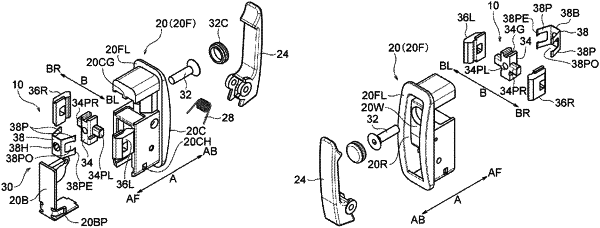| CPC F16B 13/0833 (2013.01) [A47G 25/065 (2013.01); F16B 5/06 (2013.01); F16B 13/0808 (2013.01); F16B 13/124 (2013.01); F16B 13/14 (2013.01); F16B 45/00 (2013.01); B61D 33/0007 (2013.01)] | 8 Claims |

|
1. A wall through fixture device comprising a case with a flange of an object, the flange being engaged with an outer face of a wall, the case being passed through the wall and a wall inner face engagement means held by the case, the wall inner face engagement means being driven so as to engage with an inner face of the wall, thereby fixing securely the object to the wall with sandwiching the wall by the flange of the case and the wall inner face engagement means characterized in that the wall inner face engagement means comprises:
a screw being rotatably supported to the case;
a nut being held non-rotatably in the case and being allowed to move toward and away from a face of the wall;
at least one latch member being formed separately from the nut and held displaceably to the nut in a direction along to a face of the wall and being engaged with an inner face of the wall and;
a resilient member for urging the latch member apart from the nut;
wherein the latch member is supported slidably by a protrusion formed on the nut while maintaining a posture such that the latch member is able to slide along a length of the protrusion in a direction along the face of the wall, the screw is screwed into the nut so as to make the nut and the latch member move toward the inner face of the wall, thereby sandwiching the wall between the flange of the case and the latch member.
|